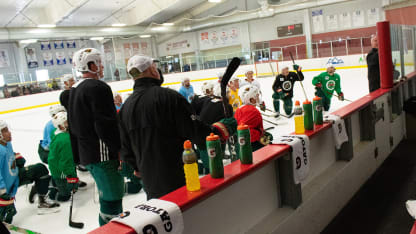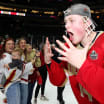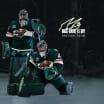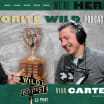"For the first 30, 40 seconds, like a normal shift, I think you're fine," said Wild forward Eric Staal, a native of Thunder Bay, Ontario (elevation: 653 feet). "But once you get extended, once you're breathing heavy and really trying to grasp that oxygen, it's just not there."
The elevation in Eagle is just a shade over 6,600 feet, which makes doing any physical activity that much more difficult. Even finely tuned athletic machines, like pro hockey players, can struggle to catch a full breath in the thinner mountain air.
"You definitely feel it. It's pretty noticable," Staal said. "Over the years, playing in Denver, you can feel it a little bit. But being up here, you just seem to be grasping for air more than normal as you're standing there in drills. It's just got a different feel as it's coming into the lungs."
Even seasoned Rocky Mountain vets like Jason Zucker, who played college hockey in Denver, 130 miles to the east and about 1,400 feet lower in elevation, struggle to handle some of the most vigorous moments in practice.
Zucker, raised in Las Vegas (elevation: 2,001 feet), played midget hockey in Plymouth, Michigan (elevation: 725 feet) before moving on to the University of Denver. When teams from the old WCHA would come to the Mile High City, then-Pioneers head coach George Gwozdecky would have a consistent game plan for his teams.
"Friday night, first period, we need to come out flying, because they're gonna be gassed," Zucker said. "That was something we talked about every weekend when we were at home."
Despite his experience playing at altitude, years removed from his DU days, it does him no good anymore. And while it can be a big advantage for college guys, Zucker said the edge for players on the pro side is minimal.



















